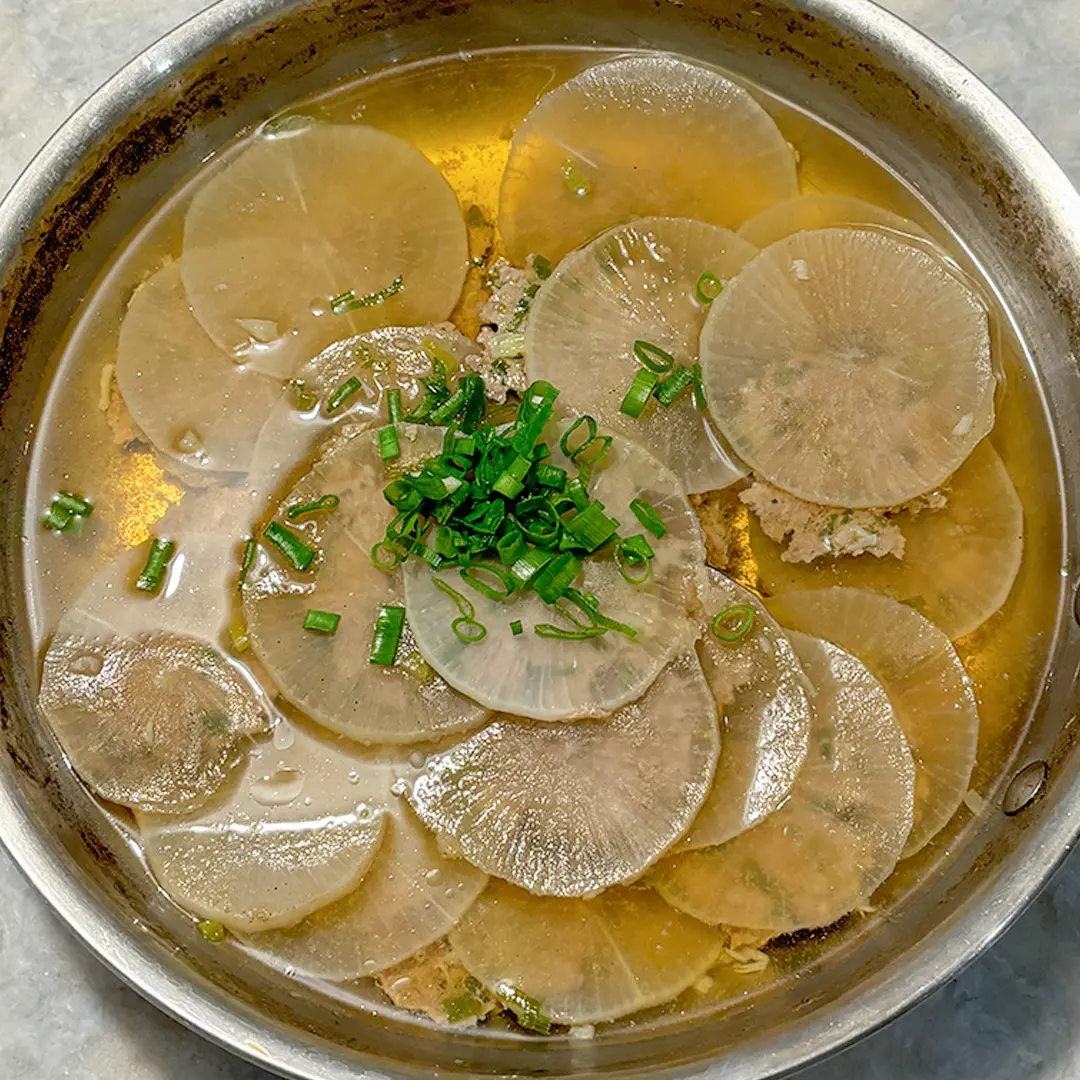
Today we’re going to make the easiest Korean Beef Radish Soup (Soegogi Muguk) 쇠고기 뭇국.
What is Muguk? 뭇국
Muguk(뭇국) is a traditional Korean soup made with radish as the main ingredient. The most popular version is beef radish soup (soegogi muguk), which is usually cooked in a clear broth. In Gyeongsang Province, however, a spicy version of muguk is made by adding gochugaru (Korean chili flakes), which gives it a unique kick. Muguk is a common dish in Korean home cooking and is often served as part of everyday meals. For ancestral rituals, a special version of beef radish soup called tang guk is prepared.
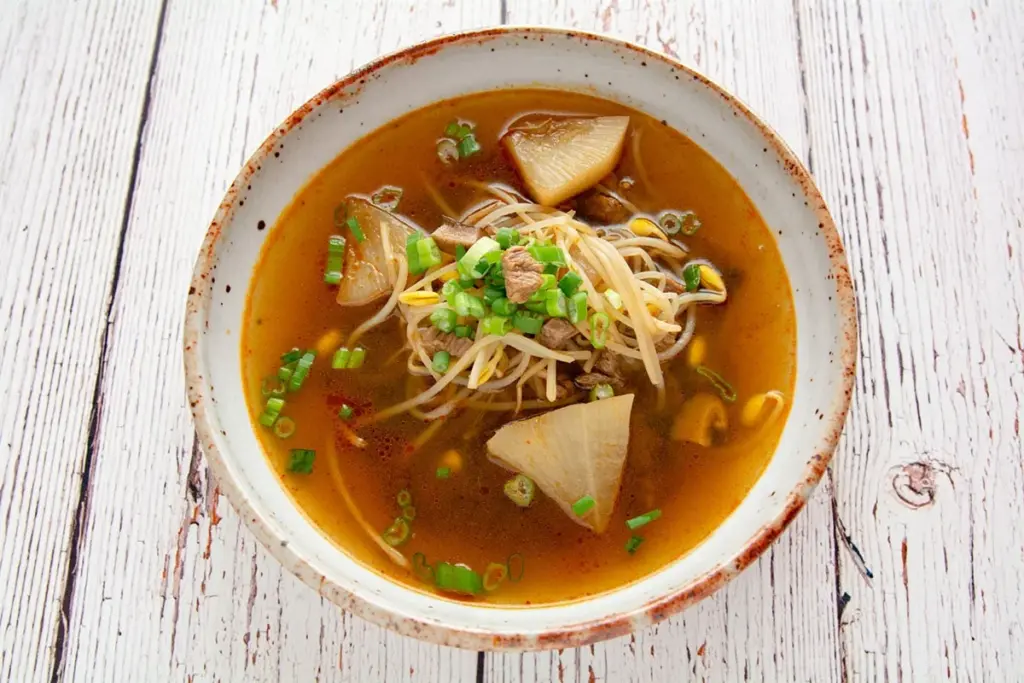
In Korea, radish is the main ingredient in many winter dishes. Slow-cooked dishes such as braised radish or Korean beef radish soup warm up the home during cooking and provide comfort on cold winter days. Winter radishes are sweeter, rich in vitamin C, and are often compared to ginseng for its health benefits.
Breakfast Soup
Today’s recipe is Korean Beef Radish Soup (Soegogi Muguk). This soup is a popular breakfast dish in Korea. A bowl of warm soup with rice can give you a hearty start to the day, even without any side dishes. I still cherish the comforting memory of waking up to the smell of my mother’s beef radish soup in the morning.
How to Cook? (Original recipe)
- Soak the beef in cold water for at least 15 minutes to remove excess blood.
- Cut the beef into cubes.
- Season the beef and marinate for 15 minutes.
- Brown the beef in a frying pan.
- Add the anchovy broth to the pan.
- ….
I’ll stop here. That’s the traditional process so far. Removing the blood from the beef, stir-frying it, and then boiling it – all these steps can make making beef soup in Korea quite time-consuming. That’s why today I’ve prepared the easiest version of this dish for you to enjoy!
The Easiest Version of Soegogi Muguk
This version of Soegogi Muguk is simpler and easier because it doesn’t require stir-frying or blanching the beef like traditional Korean recipes. Despite the simplicity, it’s incredibly flavorful, with a taste reminiscent of Galbitang (beef short rib soup). The presentation is elegant, almost like a mille-feuille, making it perfect for serving to guests. By slicing the radish thinly, this recipe reduces the cooking time compared to the traditional version. However, the longer it simmers, the sweeter the radish becomes, and the melted beef fat deepens the flavor, creating a truly comforting Korean dish.
10 Korean Soups to Try (국 Guk)
If you love Korean food, I have no doubt that you’ll fall in love with Korean soups. Korea has a deep history with soups, and you simply can’t talk about Korean cuisine without them. If you’re not sure which soup to try, this guide is perfect for you!
10 Korean soups to tryAnother Korean soup to try?
This is Korean tteokguk (rice cake soup). How about a warm and healthy bowl?
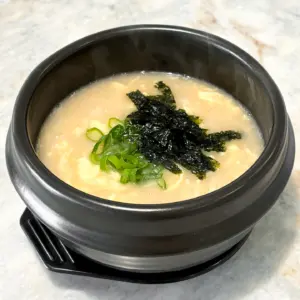
Another Korean Soup with Beef and Radish
If you’ve bought beef and radish today, I highly recommend trying this dish as well: Galbijjim 갈비찜 (Korean Braised Beef Ribs). I’ve developed an incredibly simple recipe for this classic dish.
Traditional galbijjim can take hours just to soak the blood out of the rib bones. But I’ve simplified the process by using boneless short ribs, cutting down on prep time while still achieving a tender and flavorful result. Plus, I’ll be sharing my mom’s secret marinade recipe—don’t miss it! Boneless Galbijjim is a game-changer!
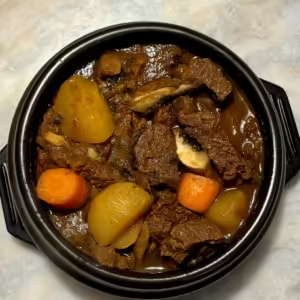
Let this warm bowl of radish soup wrap up your day in coziness.
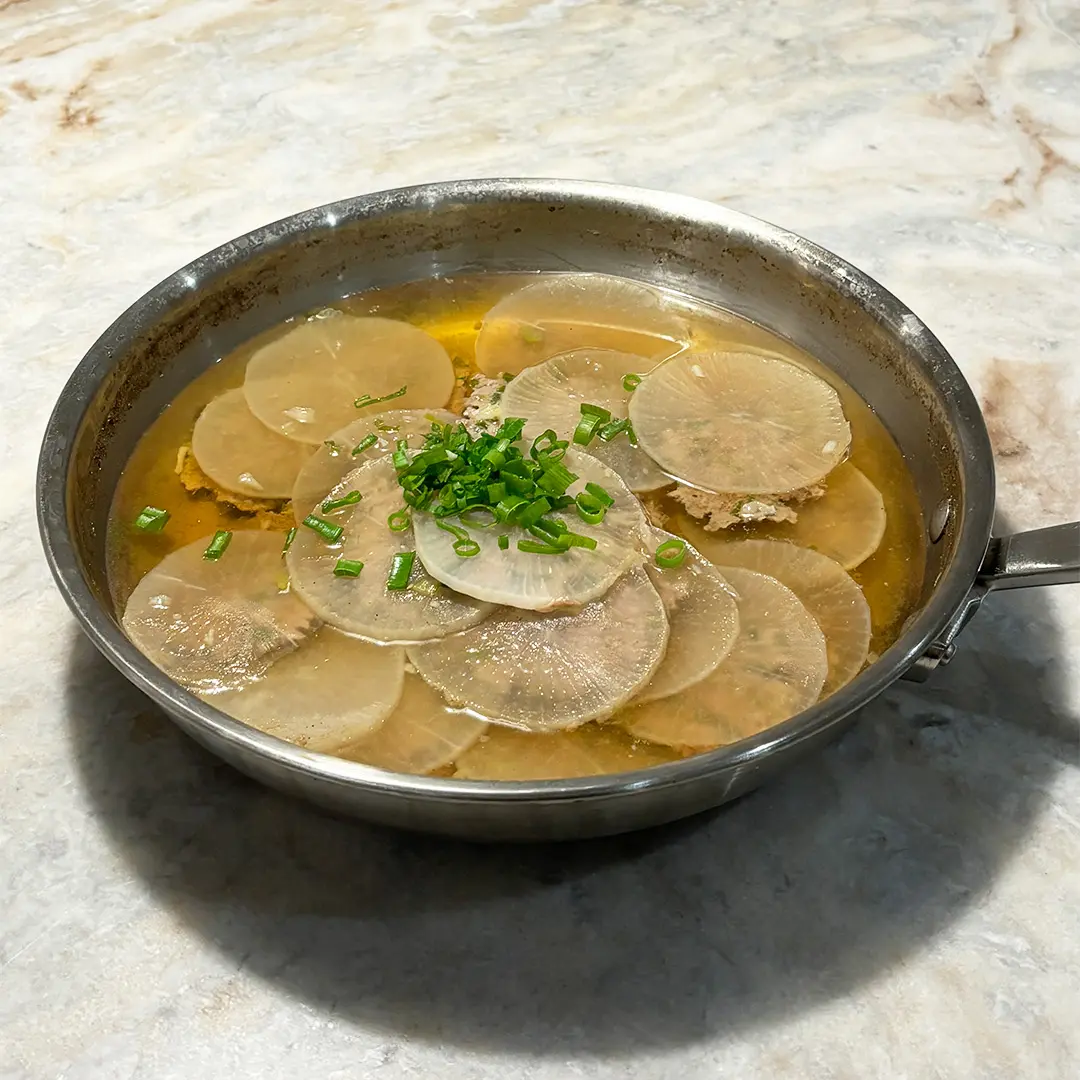
beef radish soup (soegogi muguk)
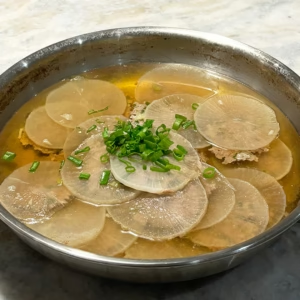
Soegogi Muguk (Korean Beef Radish Soup)
Equipment
- 1 Cutting board & knife
- 1 Wide pan or shallow pot (with a lid)
- 1 Mixing bowl
- 1 Tablespoon
- 1 Teaspoon
Ingredients
- 200 g ground beef
- 300 g Korean Radish(mu) or Daikon
- 1 green onion
- 1/2 tbsp soup soy sayce Gukganjang
- 1 cube seafood(fish) stock or 1tbsp anchovy fish sauce
- 1 tsp minced garlic
- 700 ml water
Instructions
Preparation
- Slice the radish into thin pieces.
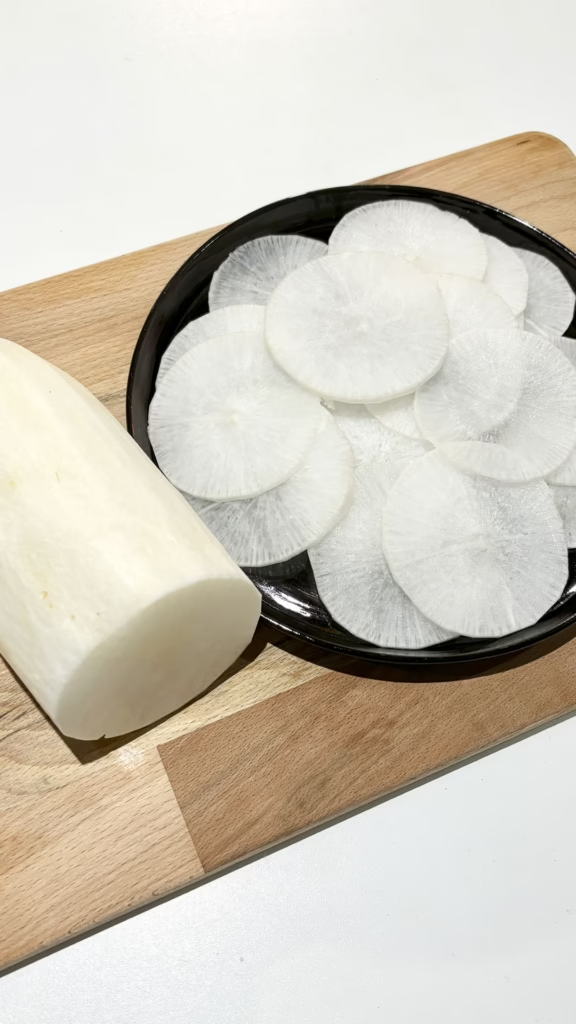
- Chop the green onion into small pieces.
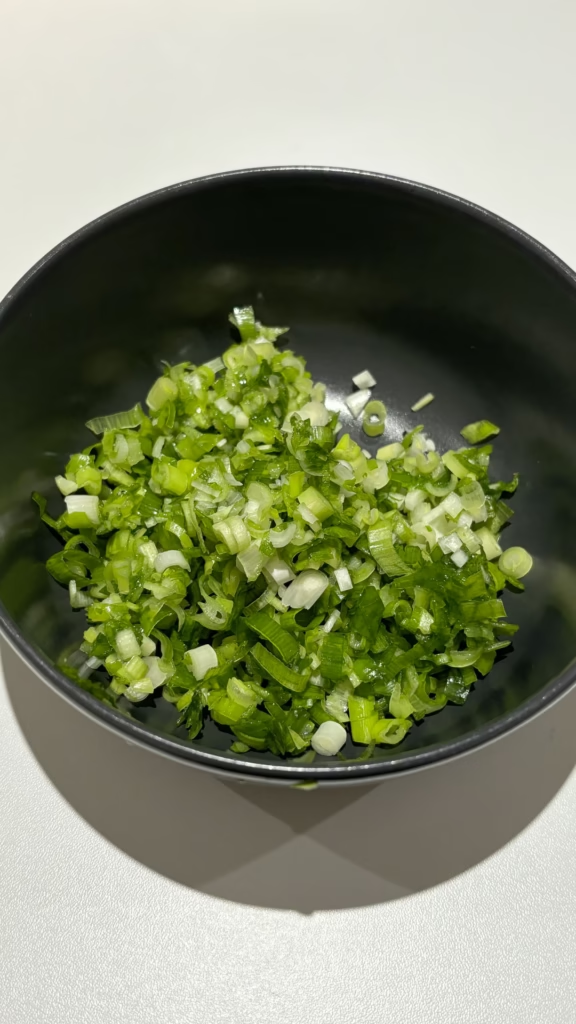
Beef Seasoning
- Mix the ground beef with 1 tbsp soy sauce
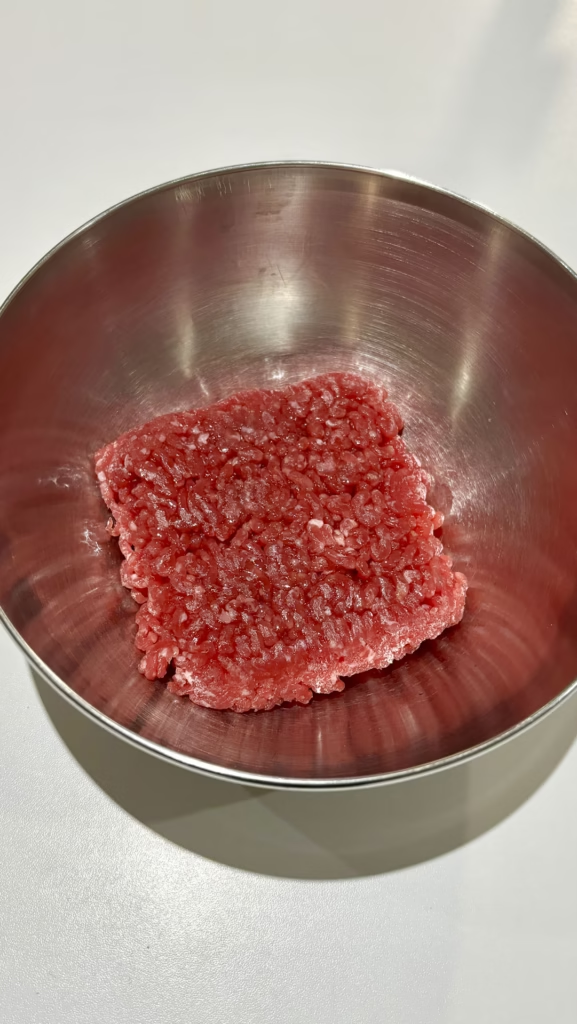
- and 3/4 of the chopped green onion.
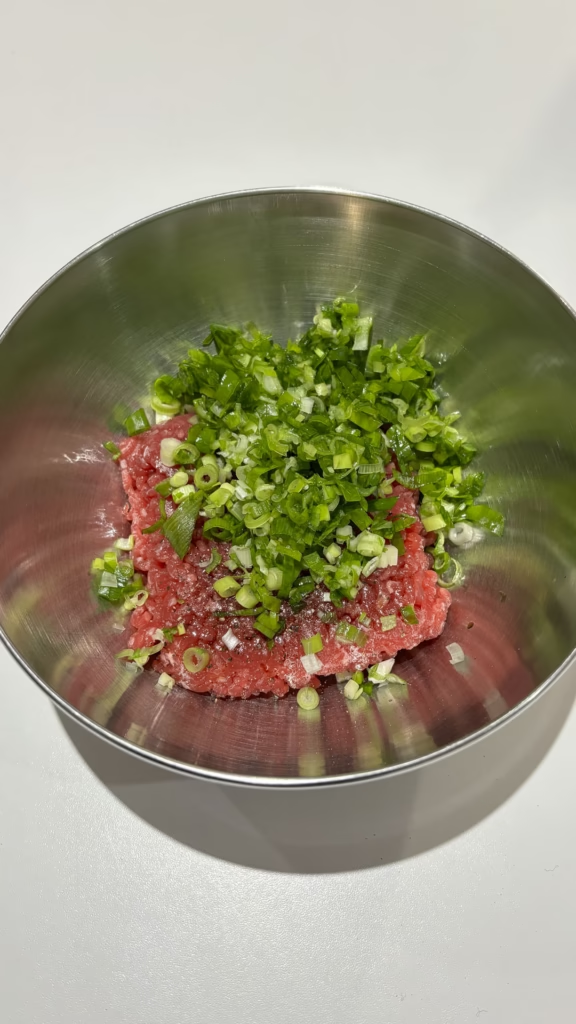
Assembly
- Press the seasoned beef thinly onto the sliced radish pieces.
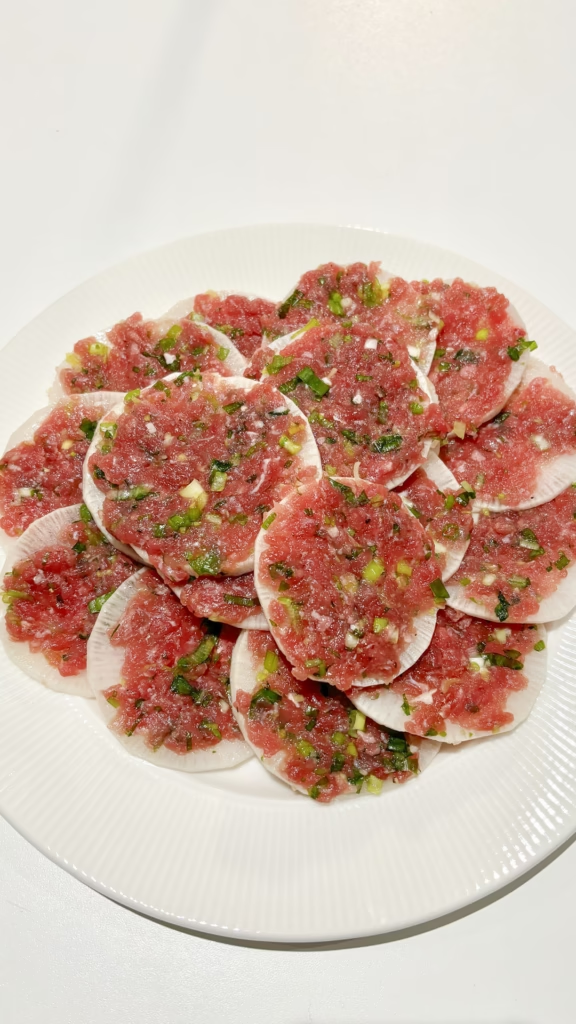
- Arrange the radish slices with beef in a circular pattern on a wide pan.
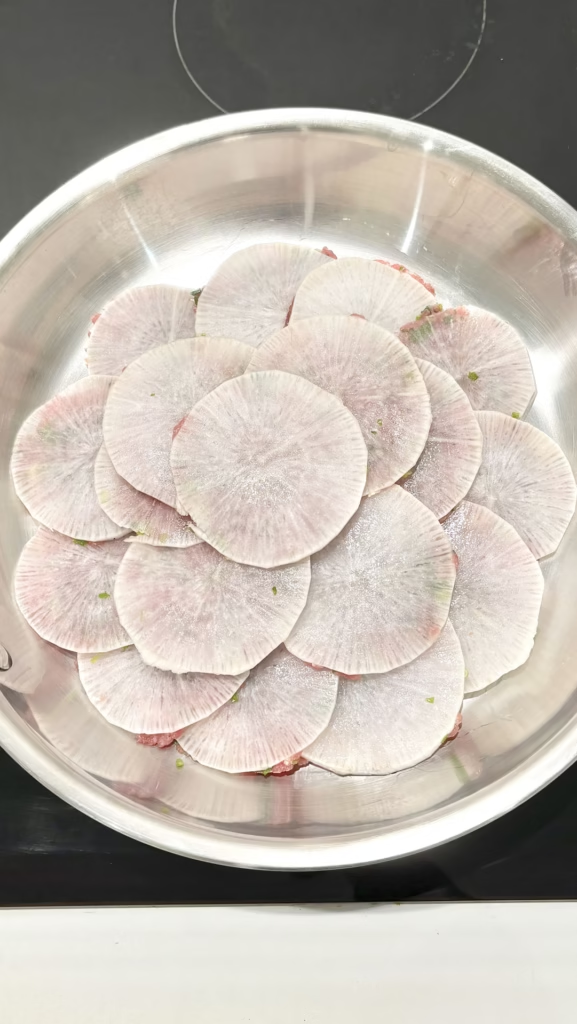
Cooking
- Add 1 tsp of minced garlic.
- Pour enough water to cover the radish (about 700ml).
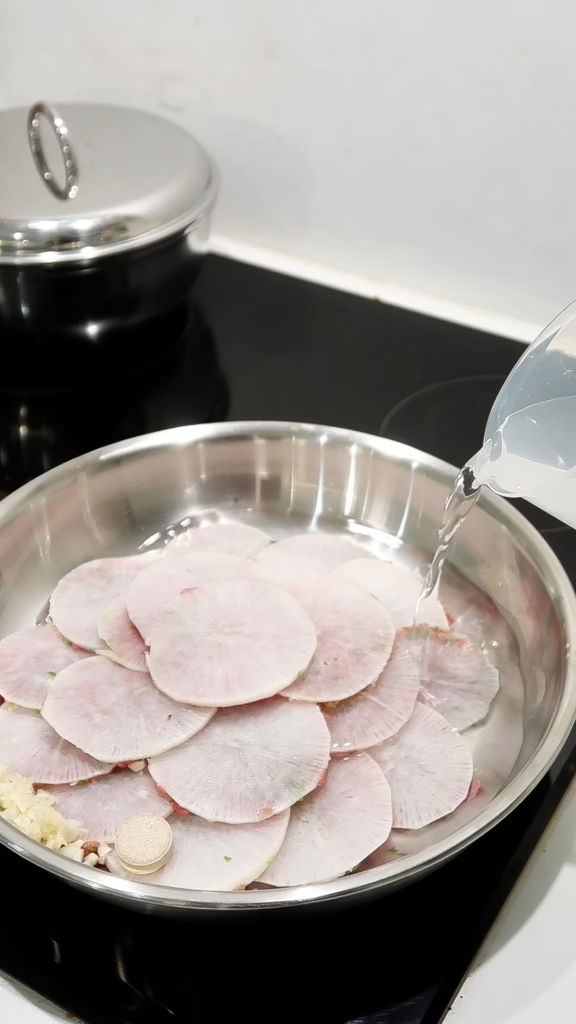
- Add 1 stock cube (or substitute with 1 tbsp anchovy fish sauce).
- Add 1/2 tbsp soup soy sauce.
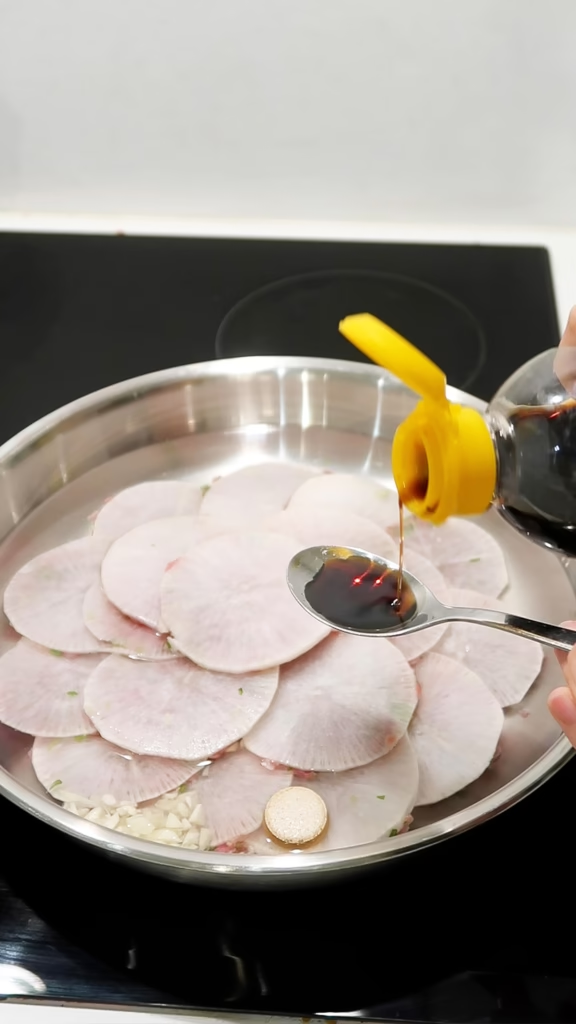
- Bring to a boil over high heat.
- Once it starts boiling, lower the heat to medium-low and simmer for at least 30 minutes.
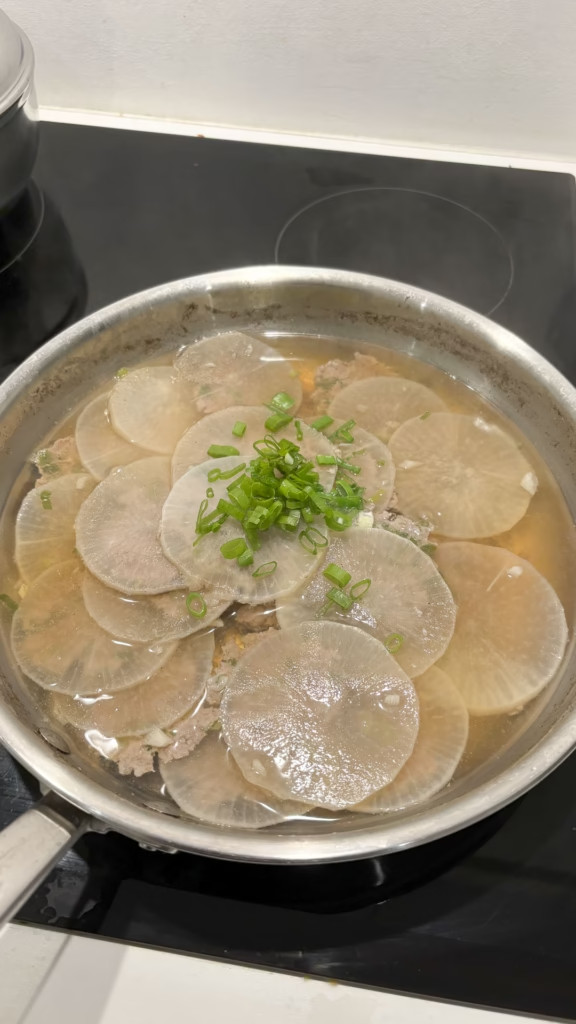
- If the water reduces too much, add more water as needed while cooking.
Final Adjustments
- The longer it cooks, the sweeter the radish becomes, and the beef flavors blend beautifully with the broth.
- Once done, taste and adjust the seasoning with salt if needed.
Jal meokgetseumnida!
- Sogogi Muguk 소고기뭇국
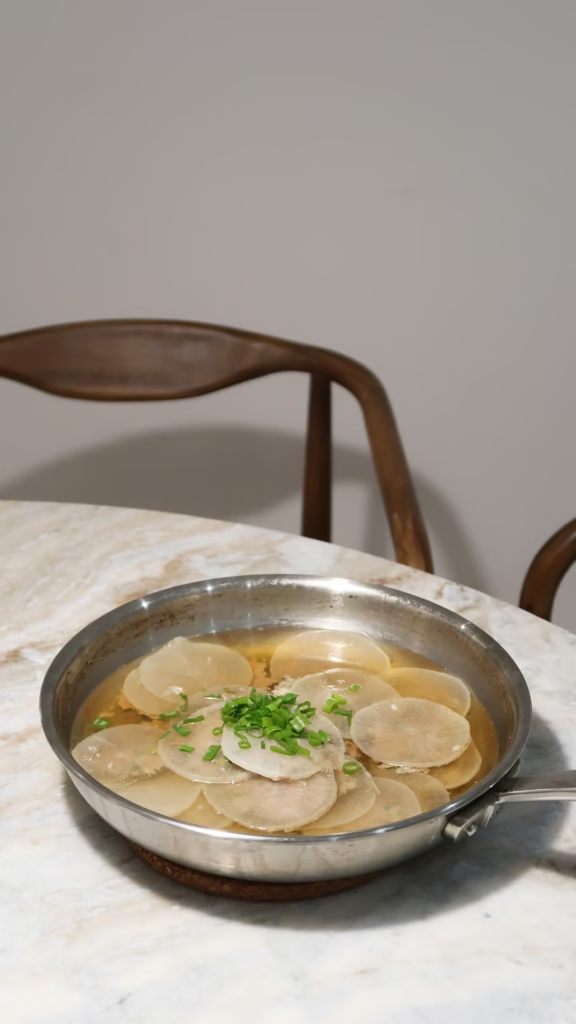
- 잘 먹겠습니다!
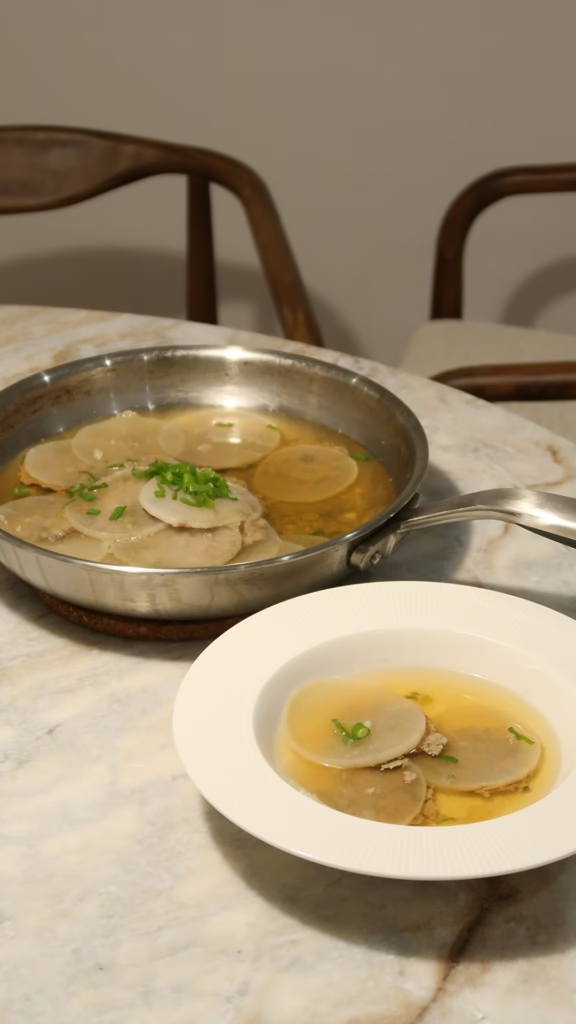
Did you make this recipe?
Please let me know how it turned out for you! Leave a comment below and tag @blondekimchi_ on Instagram and hashtag it #blondekimchi.
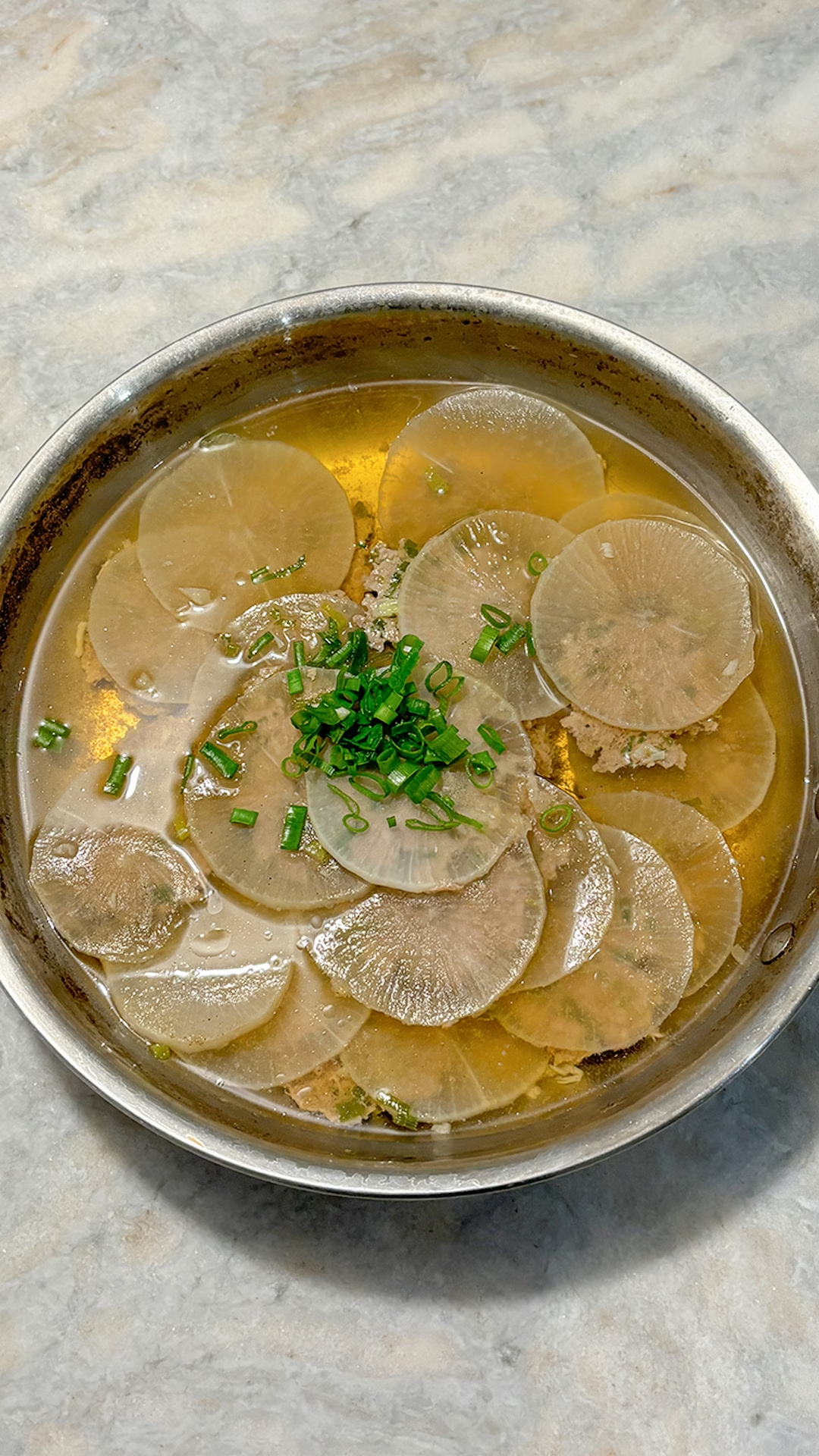
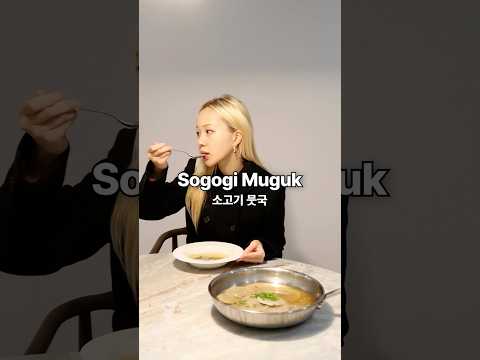
This Sogogi Muguk recipe is a total win! The radish gets perfectly sweet with the slow simmer, and the beef gives such depth to the soup. I love how simple and comforting this dish is. It’s the kind of soup that wraps you in warmth from the inside out, and it’s so easy to make. Definitely my go-to for cozy, chilly days.